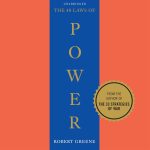Customers say
Customers find the book offers great insights into global economic history and appreciate its readability, with one noting it’s a fantastic read for personal and business growth. The writing quality receives mixed feedback – while many find it easy to read and understand, others find it repetitive. The timeline accuracy and outlook aspects also receive mixed reviews, with some considering it the best read of 2022 while others find it long and not necessarily encouraging for the American future.
Make It Yours – See Your Price On Amazon!
Your Sales Price $35.00 - $19.39
A quick rundown of this product’s key features:
NEW YORK TIMES BESTSELLER * MORE THAN ONE MILLION COPIES SOLD
“A provocative read…There are few tomes that coherently map such broad economic histories as well as Mr. Dalio’s. Perhaps more unusually, Mr. Dalio has managed to identify metrics from that history that can be applied to understand today.” —Andrew Ross Sorkin, The New York Times
From legendary investor Ray Dalio, author of the #1 New York Times bestseller Principles, who has spent half a century studying global economies and markets, Principles for Dealing with the Changing World Order examines history’s most turbulent economic and political periods to reveal why the times ahead will likely be radically different from those we’ve experienced in our lifetimes—and to offer practical advice on how to navigate them well.
A few years ago, Ray Dalio noticed a confluence of political and economic conditions he hadn’t encountered before. They included huge debts and zero or near-zero interest rates that led to massive printing of money in the world’s three major reserve currencies; big political and social conflicts within countries, especially the US, due to the largest wealth, political, and values disparities in more than 100 years; and the rising of a world power (China) to challenge the existing world power (US) and the existing world order. The last time that this confluence occurred was between 1930 and 1945. This realization sent Dalio on a search for the repeating patterns and cause/effect relationships underlying all major changes in wealth and power over the last 500 years.
In this remarkable and timely addition to his Principles series, Dalio brings readers along for his study of the major empires—including the Dutch, the British, and the American—putting into perspective the “Big Cycle” that has driven the successes and failures of all the world’s major countries throughout history. He reveals the timeless and universal forces behind these shifts and uses them to look into the future, offering practical principles for positioning oneself for what’s ahead.
Our Top Reviews
Reviewer: Peter Ganavazos
Rating: 5.0 out of 5 stars
Title: Great book for understanding how the world works!
Review: Dalio has a unique perspective on the topic of the changing world order. He is a successful businessman who has spent his career analyzing economic trends and patterns, and this book is a culmination of his findings. His writing is clear and concise, making complex economic concepts easy to understand.One of the best features of the book is its organization. The book is broken down into 14 chapters, each focusing on a different aspect of the changing world order. Dalio starts with the big picture, examining the major forces driving the changing world order, before delving into the specifics of each major empire, including the Dutch, British, American, Chinese, Soviet, and Japanese empires. Ultimately, he brings everything full circle by discussing the changing world order today and what the future may hold.Another great aspect of the book is the way that Dalio weaves history and economics together. He doesn’t just present economic theories in a vacuum; he uses real-world examples to show how they have played out over time. For example, in Chapter 5, he discusses the Great Depression and how it shaped the changing world order in the 1930s and 1940s. He also uses the rise of populism in Chapter 7 to illustrate how economic inequality can lead to political instability.Overall, I would highly recommend “The Changing World Order” to any intelligent human interested in economics, history, or politics. This book is a must-read for anyone who wants to understand the forces shaping our world today and what the future may hold. As Dalio himself puts it, “understanding how the world works is essential if you want to accomplish your goals and live a fulfilling life.”Here are some key takeaways from the book:The changing world order is driven by three major forces: the changing relative powers of countries, the changing relative productivity of countries, and the changing values of countries.The rise and fall of empires is a natural part of the changing world order. Each empire has its own unique characteristics, but they all follow a similar pattern of rise, peak, and decline.The post-World War II order was built on the idea of free trade and cooperation between nations. However, this order is now under threat due to rising nationalism and protectionism.China is currently on the rise and is likely to become the world’s dominant economic power in the coming decades. However, although this rise is not guaranteed, and there are many challenges that China will need to overcome, the US needs to step up its game on several fronts to compete.The future of the world order is uncertain, but there are a few things we can say with some degree of certainty. For example, the rise of automation and artificial intelligence is a hot topic today likely to have a major impact on the global economy in the coming years.Overall, “The Changing World Order” is a well-written and informative book that is sure to appeal to a wide range of readers. Whether you’re a history buff, an economics nerd, or just someone who wants to better understand the world we live in, this book is well worth your time. As Dalio himself says, “The more you know, the more you’ll understand, and the more you’ll be able to make informed decisions about your own life.” Five stars from me, give it a read!
Reviewer: Richard Blackstone
Rating: 5.0 out of 5 stars
Title: Great read.
Review: Excellent read. Great author and the ideas are on point.
Reviewer: LenZen
Rating: 4.0 out of 5 stars
Title: Is the United States Getting Close to Multiple Simultaneous Crises?
Review: In this book, Dalio presents his model of the rise and fall of “empires”. The closer it gets to the present day the more interesting the book is. The last three chapters of the book which deal with the rise of China, the current tensions between China and the US, the United States’s alleged decline and Dalio’s conjectures regarding the future are five stars. The build up to the final three chapters is decent, although only occasionally riveting: The book is only three stars before the strong close.It is hard to evaluate the merits of Dalio’s historical model given that he is only presenting it at moderate depths so as to introduce it all in one volume. The model says that empires rise and fall, no surprise, and talks about the interplay of economic, internal, and external factors that take an empire through the cycle. Dalio also mentions that inside the Big Cycle there are other cycles, and inside those cycles other cycles. He does not, however, go into much detail regarding the sub-cycles. This sounds reminiscent of Robert Prechter’s Elliot Waves or perhaps, even, pre-Copernican astrology. Is this a model so loose, like Elliot Waves, that it can be found to fit anything that could happen? Is it falsifiable? Along the way was the validity tested by approaching an empire that there was little prior knowledge of to make “forward predictions” regarding what would happen? Has Dalio merely cherry picked the three examples which best seem to demonstrate the soundness of the model while omitting more problematic cases? There is not enough in this book to do a rigorous analysis.The United States Civil War is a good example of something I had trouble thinking about in terms of the model. According to the model the final stage in an empire’s breakdown is civil war or revolution. In the case of the United States, however, the Civil War occurred while the United States was still ascendant: in stage 2 out of 6 with stage 3 being the peak. Certainly there was no debt crisis which caused the Civil War and the United States had little going on in terms of external conflict at the time. So perhaps that could have been taken as a “prediction” that the United States would almost certainly have survived the Civil War in tact? The truth, however, is that the South came very close to winning the Civil War, in the sense of being recognized as independent, according to McPherson’s Battle Cry of Freedom.Another thing that I am not sure how to evaluate using the model is the United States after the Civil War and after the Revolution. Although these were periods of rebuilding they do not seem to fit well into Dalio’s model. After victory in these conflicts Americans were very magnanimous (as it was later after World War II). Far from being purged those who were on the wrong side of history ended up facing rather little in the way of consequences. So how does this fit into the model? Obviously, there will be some “rebuilding” after a Revolution or Civil War so is the model just saying there will be something which could not not happen? Indeed although the United States was vibrant after the Revolution, the period after the Civil War as described in Richard White’s The Republic for Which it Standards seems in decline compared to the Antebellum period. According to Dalio’s model, however, the United States was stage 2 rising into stage 3 during this period.Regardless of the merits of the model, which would probably require many in depth books to evaluate fully, there is definitely some good high level overviews of Chinese, European, and American history. There are many interesting charts and statistics thrown in.As mentioned, the close of the book is far and away the best part of it. Dalio describes the cultural differences between Americans and Chinese people and their different outlooks toward governing. Dalio does not seem to be pushing any political agenda, at least not too hard, but rather what he has carefully measured to be objectively true. Although clearly an admirer of much about China, he is also willing to criticize some aspects of China. At the same time, his criticism omits its surveillance state.Looking forward Dalio presents some very interesting charts and statistics regarding America’s growing internal conflicts. He even has a graph to show how bad it is now compared to early points in history. Dalio is willing to stick his neck out and quantify what his model is predicting as the probability of civil war in the United States and the probability of military war with China in the next decade.Although very thought provoking overall, one particularly persistent problem throughout the book is that many of the charts are very hard to read. There are graphs with eight different lines with some of the colors very hard to distinguish between. The book also almost never references its sources. Indeed, given how much history Dalio has obviously studied, a bibliography, or at least a list of recommendations, would be very nice.Dalio is very repetitive regarding the inevitable death of fiat currencies through money printing. At the same time he also does provide concrete advise of how to prepare. He gives some definite timelines and the dates are very close. To qualify this, somewhat, however, his company Bridgewater Associates has basically had a “lost decade” using his models to generate any kinds of returns since his departure around 2012. Nevertheless it is interesting to think about whether or the US is on the verge of multiple simultaneous crises.
Reviewer: Jayme
Rating: 5.0 out of 5 stars
Title: 10/10 Recommend
Review: I took Jeffrey Sachs’s Globalization class on EDX Academy and somehow stumbled upon this book in between class and finding books around the subject.I watched his youtube video that generalizes the book and was blown away by how my current class I was taking aligned with it.This book is an easy read, and especially for those who aren’t well-versed about world history and world economics. I will admit that I do love history, and am learning economics, so this book was a beautiful way merge all these timelines together.The book breaks down and summarizes key points in world history and economics to make points to get the message across each chapter.Font size is great! Might even be considered larger compared to other books.The only thing I wish this book provided was thicker paper in the physical book itself, especially for the hardcover version.If Ray Dahlio ever comes out with a special edition of this with a higher quality paper, I would gladly purchase it for my collection.
Reviewer: bolsaespanola
Rating: 5.0 out of 5 stars
Title:
Review: It is written based on rich data,super computer and Dalio’s keen observation. The conclusion might be shocking but objective and accurate whether you like it or not. His trackrecord as an investor proves it. (As of September 23,22 his pure alpha fund delivers 32.7% YTD after fee in this difiicult year) Everybody and especailly politicians and investors should read this.Most alaraming is he gives 35% chances to a big war of USA and China in next 10 years.(although he admits it is a wild guess) That is too high to ignore. All Taiwanese and Japanese need to think about PlanB
Reviewer: BDN
Rating: 3.0 out of 5 stars
Title:
Review: Interesting, learned quite a bit. But the repetitions are incredibly annoying- the whole book could have told in less than halve the pages. In addition the book is also a lot about Ray (I do this, I did that), which could be left out. Remarks like: you may want to read previous section again, slowly. Effing patronizing!
Reviewer: anibal fernandes
Rating: 5.0 out of 5 stars
Title:
Review: All the text ellucidates about the perspective and the near future of the rise and fall of the civilizations as a continuous – where the falls are the “normal” – because when a civilization declines, the vacum left will be preempted by another new and pujannt civilization. Our job is prevent the falls and prepares – when it will be possible – for that!
Reviewer: Firat M.
Rating: 5.0 out of 5 stars
Title:
Review: The book is called changing world order but it will also change your world. Everyone should be able to benefit from this book.
Reviewer: Sam_Ashcraft
Rating: 5.0 out of 5 stars
Title:
Review: Ray Dalio n’est plus a présenter dans le monde de l’Economie. Et ce livre est encore une fois un plaisir à lire. Des recherches approfondies et une analyse (même plusieurs) très poussée permettent de comprendre les différents cycles économiques à travers le temps et donnent les clefs pour comprendre le monde actuel. Beaucoup de graphiques et d’illustrations permettent de visualiser les cycles et les principales crises économiques et financières. Construit en 3 parties bien distinctes, chacune d’elle est expliquée et décortiquée dans un langage clair et compréhensible.
Price effective as of Apr 08, 2025 20:00:11 UTC
As an Amazon Associate Dealors may receive a commission for purchases made through these links.









